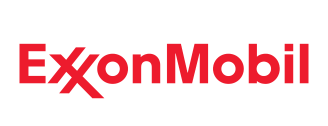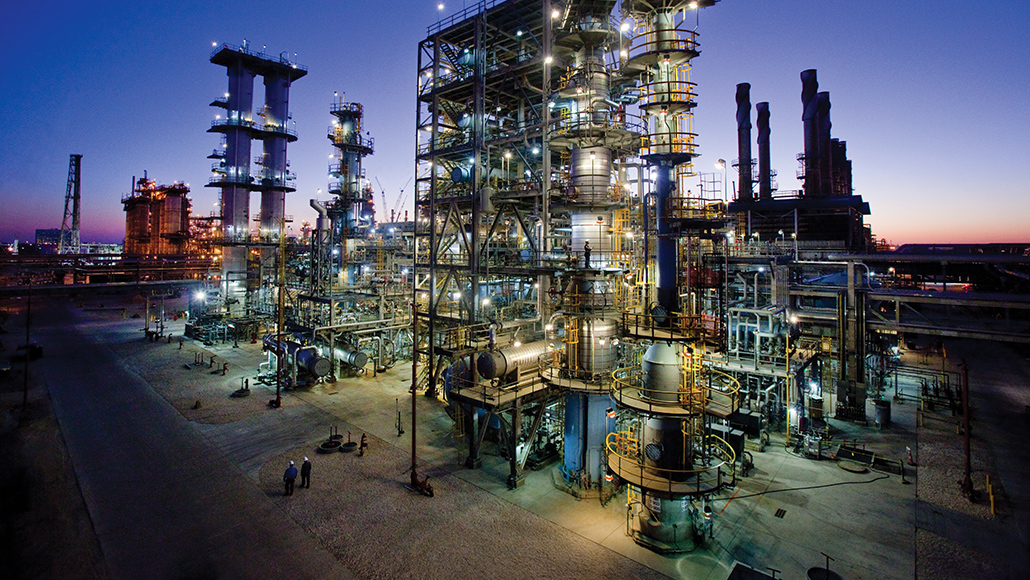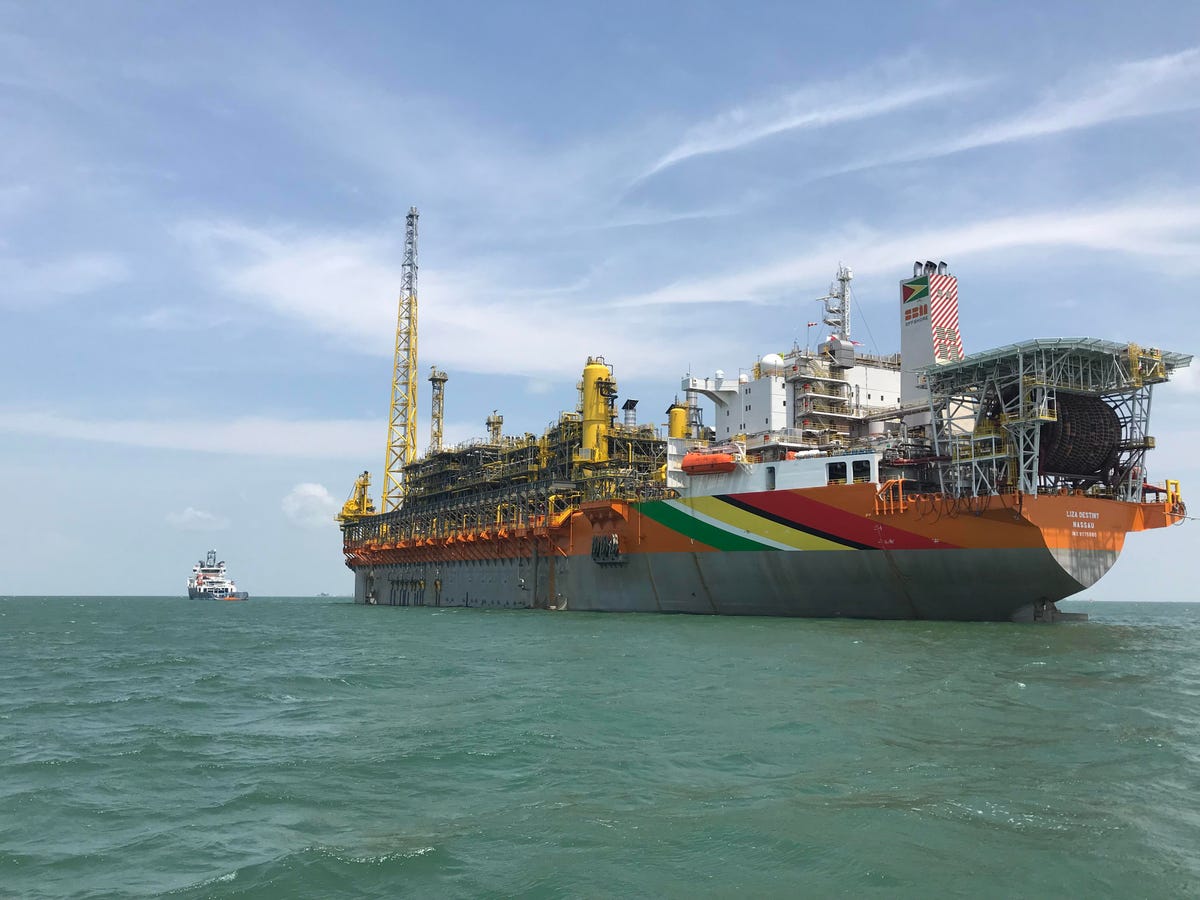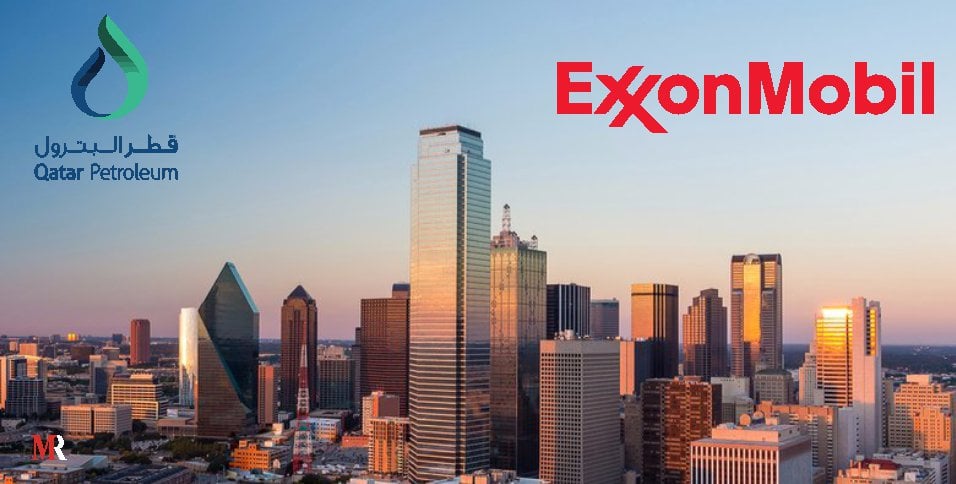ExxonMobil Corp
Summary
- ExxonMobil was established 135 years ago in 1882 as Standard Oil Company and was incorporated in the State of New Jersey. Although the company can be traced back to 1870 when Standard Oil Company is formed.
- The company’s primary businesses are divided into three parts – Upstream, Product Solutions and Low Carbon Solutions – and products include energy, chemicals, lubricants, and lower-emissions technologies.
- Exxon Mobil Corporation has several divisions and hundreds of affiliates, many with names that include ExxonMobil, Exxon, Esso, Mobil or XTO.
- For the third quarter of the company ended on September 30, 2022, ExxonMobil has reported total revenue of $112,070 million which was $25,422 during the same period a year earlier.
- In 2021, ExxonMobil has reported $276,692 million in revenue, up 54% from $178,574 million. Net income in the financial year is $23,040 million, which was a net loss in 2020 of $22,440 million.
- The company has worldwide presence. Major production sites of the company are located in the US, Guyana, Indonesia, Papua New Guinea and Qatar.
Brief Company Overview
 ExxonMobil (NYSE:XOM) is among world’s top energy providers and chemical manufacturers. The company was established 135 years ago in 1882 as Standard Oil Company and was incorporated in the State of New Jersey. Standard Oil Company (Jersey Standard) changes its name to Exxon Corporation in 1972. On the other side, Vacuum Oil Company was established in 1866. Vacuum changed its name to Mobil Oil Corporation in 1966. Exxon Corporation and Mobil Oil Corporation join to form Exxon Mobil Corporation on November 30, 1999.1 The company’s primary businesses are divided into three parts – Upstream, Product Solutions and Low Carbon Solutions – and products include energy, chemicals, lubricants, and lower-emissions technologies. ExxonMobil holds an industry-leading portfolio of resources, and is one of the largest integrated fuels, lubricants and chemicals companies in the world.2 Previously reported business divisions Downstream and Chemical are combined as Product Solutions, effective from April 1, 2022.3 Exxon Mobil Corporation has several divisions and hundreds of affiliates, many with names that include ExxonMobil, Exxon, Esso, Mobil or XTO. The company has its operation at every level of oil and gas exploration, production, refining and marketing, and petrochemicals manufacturing. Aside from the operation of the company in the US, the company has operation is Guyana, Indonesia, Papua New Guinea, and Qatar.4 ExxonMobil employs 63,000 employees as of the end of 2022. Some of ExxonMobil's main competitors include Netherlands-based Royal Dutch Shell PLC (SHEL), Britain-based BP PLC (BP), France-based Total SE (TOT), Chevron Corp. (CVX), and Saudi Arabia-based Saudi Arabian Oil Co. (TADAWUL:2222), better known as Saudi Aramco. The company is currently helmed by Darren W. Woods who became a Director and President of Exxon Mobil Corporation on January 1, 2016, and Chairman of the Board and Chief Executive Officer of Exxon Mobil Corporation on January 1, 2017.
ExxonMobil (NYSE:XOM) is among world’s top energy providers and chemical manufacturers. The company was established 135 years ago in 1882 as Standard Oil Company and was incorporated in the State of New Jersey. Standard Oil Company (Jersey Standard) changes its name to Exxon Corporation in 1972. On the other side, Vacuum Oil Company was established in 1866. Vacuum changed its name to Mobil Oil Corporation in 1966. Exxon Corporation and Mobil Oil Corporation join to form Exxon Mobil Corporation on November 30, 1999.1 The company’s primary businesses are divided into three parts – Upstream, Product Solutions and Low Carbon Solutions – and products include energy, chemicals, lubricants, and lower-emissions technologies. ExxonMobil holds an industry-leading portfolio of resources, and is one of the largest integrated fuels, lubricants and chemicals companies in the world.2 Previously reported business divisions Downstream and Chemical are combined as Product Solutions, effective from April 1, 2022.3 Exxon Mobil Corporation has several divisions and hundreds of affiliates, many with names that include ExxonMobil, Exxon, Esso, Mobil or XTO. The company has its operation at every level of oil and gas exploration, production, refining and marketing, and petrochemicals manufacturing. Aside from the operation of the company in the US, the company has operation is Guyana, Indonesia, Papua New Guinea, and Qatar.4 ExxonMobil employs 63,000 employees as of the end of 2022. Some of ExxonMobil's main competitors include Netherlands-based Royal Dutch Shell PLC (SHEL), Britain-based BP PLC (BP), France-based Total SE (TOT), Chevron Corp. (CVX), and Saudi Arabia-based Saudi Arabian Oil Co. (TADAWUL:2222), better known as Saudi Aramco. The company is currently helmed by Darren W. Woods who became a Director and President of Exxon Mobil Corporation on January 1, 2016, and Chairman of the Board and Chief Executive Officer of Exxon Mobil Corporation on January 1, 2017.

Financial Analysis
Q3’22 Results
For the third quarter of the company ended on September 30, 2022, ExxonMobil has reported total revenue of $112,070 million of which 95% comes from sales and other operating revenue, 4% comes from income from affiliates and about 1% from other incomes. Total revenue during the same period a year earlier was $73,786 million dollars. During Q3 of 2022, increase in revenue is 51.88%. Reported net income before taxes during this period is $25,422 million, an increase of 165% from $9,606 million a year earlier. Net income during Q3 of 2022 is $19,660 million, up from $6,750 million a year earlier. Earnings per share (EPS) for this quarter is $4.68, up from $1.57 during the same quarter a year earlier.
Total current assets of the company is reported at $99,289 million on September 30, 2022, which was $59,154 during December 31, 2021. The increase is a result of improved cash position, increase in notes and accounts receivable, and increase in inventories. The long-term assets of the company include investments, advances and long-term receivables, property, plant and equipment, and intangible assets of total $270,863 million. Total assets reported is thereby $370,152 million on the end of the quarter, which was $338,923 million at the end of the previous financial year. Current liabilities of the company is reported to $74,057, up from $56,643 at the end of previous financial year. The increase is due to about a $12 billion increase in the accounts payable. Including the long-term liabilities, the company has reported total liabilities of $177,109 million which was $163,240 million a year earlier. The company has 9,000 million shares of common stock without par value authorized and 8,019 million from it issued. ExxonMobil reports accumulated comprehensive loss of $17,803 million on September 30, 2022. The company also has treasury stocks worth $236,080 which is subtracted from equity to reach a total reported equity on September 30 of $186,100 million.
During the first nine months of the financial year 2022-23, ExxonMobil’s operation has provided a cash inflow of $59,176 million, investing activities has used $9,387 million, and financial activities has consumed $25,177 million. Increase in the cash position during the period is $23,662 million, which was $404 million a year earlier.
Annual Financial Results Analysis
In 2021, ExxonMobil has reported $276,692 million in revenue, up 54% from $178,574 million. Net income in the financial year is $23,040 million, which was a net loss in 2020 of $22,440 million. Depreciation cost during 2020, the year of pandemic, was very high at $46,009 million compared to $18,998 million in 2019 and $20,607 in 2021. Earnings per share (EPS) was $5.39 in 2021, up from negative $5.25 in 2020.
Business Segment Performance: Upstream
The upstream segment of ExxonMobil contains exploration activities, which include creating geological surveys and obtaining land rights, and production activities, which include onshore and offshore drilling.5 During 2021, ExxonMobil has profited $15,775 million from its upstream business, which was a loss of $20,030 a year earlier. Return on average capital employed (ROCE) in 2021 from this business segment is 10.1%, while it was negative 11.6% a year earlier.
Business Segment Performance: Downstream
Downstream segment of ExxonMobil is charged with logistics, trading, refining and marketing of the products. During 2021, ExxonMobil has profited $2,105 million from its upstream business, which was a loss of $1,077 a year earlier. Return on average capital employed (ROCE) in 2021 from this business segment is 6.7%, while it was negative 3.6% a year earlier.
Business Segment Performance: Chemical
The facilities of this segment convert crude oil into petrochemical feedstocks that are used in medical equipment, electronics, clothing, vitamin capsules, tires and many other products. Chemical products of the company include Olefins, polyethylene, polypropylene, and intermediates. During 2021, ExxonMobil has profited $7,796 million from its upstream business, which was $1,963 a year earlier. Return on average capital employed in 2021 from this business segment is 23.6%, while it was 6.1% a year earlier.
It is to be noted that the business segments – Downstream and Chemical, are combined into ‘product solutions’ effective from April 1, 2022.
Impairment
ExxonMobil has charged depreciation, impairments and depletion of $20,607 million during 2021, which was $46,009 million in 2020. Of that amount, Accumulated depreciation and depletion totalled $278,510 million in 2021 and $277,769 million in 2020. In 2021, the Corporation identified situations where events or changes in circumstances indicated that the carrying value of certain long-lived assets may not be recoverable and performed impairment assessments. Before-tax impairment charges of $1.2 billion, including impairments of suspended wells, were recognized during the year largely as a result of changes to Upstream development plans.
In 2020, as part of the Corporation's annual review and approval of its business and strategic plan, a decision was made to no longer develop a significant portion of the dry gas portfolio in the U.S., Canada and Argentina. The impairment of these assets resulted in before-tax charges of $24.4 billion in Upstream. Other before-tax impairment charges in 2020 included $0.9 billion in Upstream, $0.5 billion in Downstream, and $0.1 billion in Chemical.
The impairment charges in 2020 is one of the reasons for an operational loss during that year.
Total assets of the company in 2021 is $338,923 million and in 2020 is $332,750 million. From the total asset current asset is $59,154 million and $44,893 million for the years, respectively. Total liabilities of the company reported during 2021 is $163,240 million and $168,620 a year earlier.6
Cash generated from operating activities during 2021 is $48,129 million and $14,668 million a year earlier. Cash used in investing activities is $10,235 million and $18,459 million, in the respective years. Net cash used in financing activities during 2021 is $35,423 million and cash provided by financing activities in 2020 is $5,285 million. Cash and cash equivalents at the end of the year is $6,802 million and $4,364 million in the respective years.
Business Overview
Exxon Mobil Corp. engages in the exploration, development, and distribution of oil, gas, and petroleum products. It operates through the following segments: Upstream, Downstream and Chemical. The Upstream segment produces crude oil and natural gas. The Downstream segment manufactures and trades petroleum products.7 Divisions and affiliated companies of ExxonMobil operate or market products in the United States and most other countries of the world. The principal business of the company involves exploration for, and production of, crude oil and natural gas; manufacture, trade, transport and sale of crude oil, natural gas, petroleum products, petrochemicals and a wide variety of specialty products; and pursuit of lower-emission business opportunities including carbon capture and storage, hydrogen and biofuels. Affiliates of ExxonMobil conduct extensive research programs in support of these businesses.

Global Presence8
US
ExxonMobil has had a presence in the United States since 1870 when John D. Rockefeller and his associates formed the Standard Oil Company (Ohio). In the US, the company has Baton Rouge area operations, Baytown operations, Beaumont operations, Billings refinery operations, Joliet operations, and other US operations.
US Chemicals Operations
Nearly half of the global capacity of chemical operations of the company is located in the US, where products for all the business lines are produced – such as, adhesion, butyl, basic chemicals, polyolefins, specialty elastomers, synthetics as well as global marketing and intermediates.
The company’s major chemical plants are integrated with refineries and have access to feedstocks ranging from light gases to heavy liquids. These plants are also tied into the region’s natural gas liquid supply hubs, allowing for unmatched capacity to process low-cost ethane. This level of downstream and upstream integration maximizes the flexibility to process advantaged feeds into premium products. The U.S. is also home to two of ExxonMobil Chemical’s five technology centers including the Baytown Technology & Engineering Complex in Baytown, Texas and the Akron Business & Technology Center in Akron, Ohio. The technology centers support ExxonMobil Chemical’s primary research and customer applications.9
US Pipeline operations
For the pipeline operations, the company has ExxonMobil Pipeline Company (EMPCo). EMPCo and its affiliates transport about 2.8 million barrels of crude oil, refined petroleum products, liquefied petroleum gases, natural gas liquids, and chemical feedstocks through approximately 8,000 miles of pipeline in 10 states and the Gulf of Mexico.
US Upstream operations
Upstream operations relate to exploration, production and research. ExxonMobil continues to actively pursue exploration activities in the U.S. Gulf of Mexico. The company has interests in 339 deepwater blocks. In 2013, ExxonMobil was awarded the right to explore seven blocks in up to 7,200 feet of water within the Central Gulf of Mexico. ExxonMobil U.S. Production operates in five states — California, Texas, Wyoming, Louisiana and Alabama — as well as in federal waters in the Gulf of Mexico and offshore Santa Barbara County. In addition to producing oil and natural gas, other products for sale include natural gas liquids, helium and carbon dioxide. Products are transported via truck or pipeline to refineries and customers throughout the United States. ExxonMobil Upstream Research Company (URC), based out of Houston, TX, is charged with developing an array of industry-leading technologies that supports ExxonMobil’s continued leadership in exploration, development, production and gas commercialization.
XTO Energy
XTO Energy Inc. was founded in 1986 in Fort Worth, Texas. The principal business of it is extracting natural gas from US shale and other tight formations. The company also produces crude oil and natural gas liquids in the United States. The company owns interests in approximately 40,000 producing oil and natural gas wells across the country. XTO Energy Inc. and Exxon Mobil Corporation merged in 2010.
Guyana
ExxonMobil initiated oil and gas exploration activities in Guyana in 2008, collecting and evaluating 3-D seismic data that led to the company safely drilling its first exploration well in 2015, Liza-1. The Government of Guyana issued the production license for the first development Liza Phase 1 in June 2017 and oil production started ahead of schedule in December 2019.10

Indonesia
ExxonMobil Indonesia has presence in the country for 124 years since 1898. A discovery of an estimated 450 million barrels of oil was announced in 2001 at the Banyu Urip oil field at the Cepu block in East Java, Indonesia. The Plan of Development rate of the filed was 165,000 barrels of oil per day. But Banyu Urip has reached (safely) a production rate of over 200,000 barrels of oil per day, delivering 25 percent of the national oil production.
Papua New Guinea
PNG LNG in Papua New Guinea is one of the all positions of ExxonMobil around the world in liquefied natural gas. The production from the project has reached 8.3 million tonnes per year, a 20-percent increase over the facility’s original capacity. According to company reports, the project has safely produced more than 19 million tonnes of LNG and loaded 262 cargoes for delivery to customers in Asia.
Qatar
ExxonMobil has partnered with Qatar Petroleum to develop the North Field, the world’s largest non-associated natural gas field. Through the Qatargas-operated joint ventures, the company has participated in 12 of the 14 LNG trains, 27 of the world’s largest LNG ships and Qatar’s largest condensate refinery. Further down the LNG value chain, ExxonMobil has partnered with Qatar Petroleum in three LNG receiving terminals in Europe and the United States.

Additionally, ExxonMobil is the only foreign participant in two domestic gas projects — Al Khaleej Gas and Barzan Gas. ExxonMobil also provides technical and management expertise to directly support Qatar Petroleum through technical services and secondments of ExxonMobil employees. ExxonMobil affiliates are working with Qatar Petroleum to identify international joint venture opportunities that further enhance the portfolio of both parties in countries such as Brazil, Argentina, the United States and Cyprus.11
Products
Polymers
- Butyle
- EPDM rubber
- Polyethylene products
- Polymer modifiers
- Polyolefin plastomers and elastomers
- Polypropylene
- EscorezTM tackifiers
Chemicals and fluids
- Synthetic base stocks
- Branched alcohols
- Branched higher olefins
- Neo acids
- Plasticizers
- Solvents and fluids
- Linear alpha olefins
- UnivoltTM transformer oils
Consumer products
- AchieveTM Advanced PP
- ExxonMobilTM PP
- JayflexTM Plasticizers
- VistamaxxTM
- ExxonTM CF
- ExxonTM CFX
History of ExxonMobil Corp
In 1859, Colonel Edwin Drake and Uncle Billy Smith drill the first successful oil well in Titusville, Pennsylvania. The colonel's discovery triggers an oil boom that parallels the gold rush of a decade earlier. Standard Oil Company (Ohio), one of the components of ExxonMobil now, was formed in 1870 by Rockefeller and his associates with combined facilities constituting the largest refining capacity of any single firm in the world. On the other side, Vacuum Oil Company introduced a number of popular products as a lubricant pioneer in the industry. Standard Oil Co. purchased a three-quarters interest in Vacuum Oil Company for $200,000 in 1879. Standard Oil Trust is formed in 1882 to include Standard Oil Company of New Jersey (Jersey Standard) and the Standard Oil Company of New York (Socony). The trust moves its headquarters to 26 Broadway, New York City in 1885. Mobiloil is a brand of Vacuum, which is used together with Standard fuel by The Wright Brothers in 1903. Socony gains strong foothold in China by developing a small lamp that burns kerosene named Mei-Foo. In 1911, following a landmark U.S. Supreme Court decision, Standard Oil breaks up into 34 unrelated companies, including Jersey Standard, Socony and Vacuum Oil. The year also marks the first time Jersey Standard's sales of kerosene are surpassed by gasoline, a product that in the early days had often been discarded as a nuisance. In 1919, Jersey Standard acquires a 50-percent interest in Humble Oil & Refining Company of Texas. The brand Esso is introduced in 1926. In the meantime, the Mobil oil is used by several landmark occasions in history - by Ralph De Palma in 1915, by Amelia Earhart in 1928. In 1952, Jersey Standard introduces Uniflo motor oil, the first multigrade motor oil recommended for both summer and winter use.
In 1966, Mobil celebrates 100 years since the founding of the Vacuum Oil Company in 1866 and changes its name to Mobil Oil Corporation. In 1972, Jersey Standard officially changes its name to Exxon Corporation. In 1982, Exxon celebrates 100 years since the formation of the Standard Oil Trust in 1882. In its first 100 years, the company evolved from a domestic refiner and distributor of kerosene to a large multinational corporation, involved at every level of oil and gas exploration, production, refining and marketing, and petrochemicals manufacturing. On March 24, 1989, the tanker Exxon Valdez runs aground in Prince William Sound in Alaska, the accident is known as The Valdez oil spill. On November 30, 1999, Exxon and Mobil join to form Exxon Mobil Corporation. In 2005, ExxonMobil and Qatar Petroleum, with other joint-venture partners, expand development of the giant North Field offshore Qatar, the largest nonassociated gas field in the world. In 2011, ExxonMobil marks its footprint in the Gulf of Mexico; in 2014, the company ships its first liquefied natural gas from ExxonMobil's PNG LNG Project in Papua New Guinea; in 2015, the company safely drills its first exploration well offshore Guyana. In the middle of these years, the company has made many striking innovations.12
Recent Developments
- ExxonMobil has launched a legal challenge against the EU in an attempt to derail the bloc’s windfall tax on the profits of energy producers in December, 2022. A windfall tax is imposed on firms that benefited from something they were not responsible for.13
- ExxonMobil has reported a net earnings of $56 billion for the year 2022, which is called 'outrageous' by the White House. The high profit is a result of fuel price instability due to Russia's invasion in Ukraine.14
- Company has disclosed its Q4'22 earnings on a 4Q 2022 Earning conference call on January 31, 2023.15
- ^ https://corporate.exxonmobil.com/about-us/who-we-are/our-history
- ^ https://corporate.exxonmobil.com/about-us/business-divisions
- ^ See 10-Q Filing, Q3, 2022, p.19
- ^ https://corporate.exxonmobil.com/operations/global-operations
- ^ https://guides.loc.gov/oil-and-gas-industry/upstream
- ^ Refer to quarterly analysis to see latest updates
- ^ https://www.forbes.com/companies/exxon-mobil/?sh=6d285dec601f
- ^ https://corporate.exxonmobil.com/operations/global-operations
- ^ https://corporate.exxonmobil.com/locations/united-states/other-us-operations#USchemicalsoperations
- ^ See full details at https://corporate.exxonmobil.com/locations/guyana/guyana-project-overview#DiscoveriesintheStabroekBlock
- ^ https://www.exxonmobil.com.qa/en-qa
- ^ For a full version of company history, visit https://corporate.exxonmobil.com/about-us/who-we-are/our-history#
- ^ https://www.bbc.com/news/business-64113398
- ^ https://www.bbc.com/news/business-64472806
- ^ https://corporate.exxonmobil.com/-/media/global/files/investor-relations/quarterly-earnings/presentation-materials/2022-presentation-materials/earnings-presentation-4q.pdf




